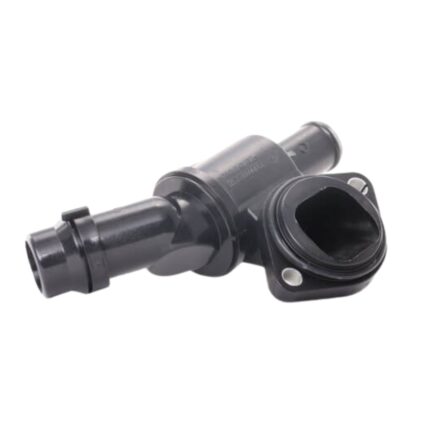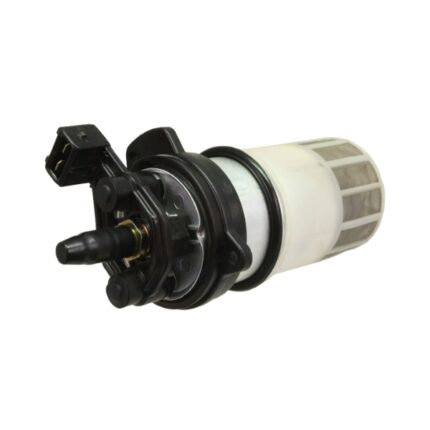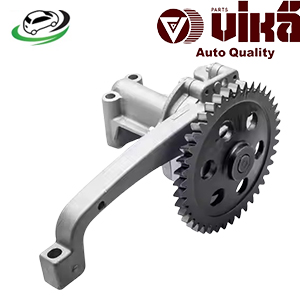Get VW Touareg (7LA 7L6 7L7)/ Transporter T5 Bus/ Multivan T5 (7HM 7HN 7HF 7EF 7EM 7EN) Oil Pump 070115103A
The oil pump is a crucial component of an engine’s lubrication system, responsible for circulating engine oil to ensure smooth operation and prevent wear and tear on engine components. This comprehensive guide will delve into the function of the oil pump, its types, benefits, common issues, and maintenance tips to ensure optimal performance and longevity.
What is an Oil Pump?
The oil pump is a mechanical device that pumps oil from the oil pan to the engine’s various components. It ensures that the engine oil is circulated adequately, providing lubrication to moving parts, reducing friction, and helping to cool the engine. The oil pump is typically located within the engine block or mounted externally, depending on the engine design.
Function of the Oil Pump
The primary functions of the oil pump include:
- Lubrication:
The oil pump delivers oil to various engine components, including bearings, camshafts, and piston rings. This lubrication reduces friction between moving parts, minimizing wear and extending the engine’s lifespan. - Cooling:
As the oil circulates through the engine, it absorbs heat generated by the friction of moving parts. The oil then carries this heat away, helping to maintain optimal engine temperatures. - Contaminant Removal:
The oil pump helps carry contaminants away from engine components. As oil circulates, it picks up dirt, debris, and metal particles, which are eventually filtered out by the oil filter. - Pressure Regulation:
The oil pump maintains proper oil pressure within the lubrication system. This pressure is critical for ensuring that oil reaches all necessary components and provides adequate lubrication. - Supply to Other Systems:
In addition to lubricating engine components, the oil pump may also supply oil to other systems, such as the turbocharger (in turbocharged engines) or hydraulic systems (in some engine designs).
Types of Oil Pumps
- Gear Pumps:
Gear pumps are the most common type of oil pump used in modern engines. They consist of two gears—one driving gear and one driven gear. As the gears rotate, they create a vacuum that draws oil from the oil pan and pushes it through the engine. Gear pumps are known for their reliability and consistent oil pressure. - Rotary Vane Pumps:
Rotary vane pumps use a series of vanes that slide in and out of a rotating rotor. As the rotor turns, the vanes create chambers that draw oil in and push it out. While less common in automotive applications, rotary vane pumps are used in some specialized engines due to their ability to maintain pressure at varying speeds. - Scroll Pumps:
Scroll pumps are relatively newer in automotive applications and use two spiral-shaped scrolls to compress and pump oil. They provide smooth and quiet operation, making them suitable for high-performance engines. - Diaphragm Pumps:
Diaphragm pumps use a flexible diaphragm to create suction and pressure, drawing oil from the pan and pushing it through the engine. While they are efficient, diaphragm pumps are less commonly used in conventional engines.
Benefits of a Well-Functioning Oil Pump
- Improved Engine Longevity:
A properly functioning oil pump ensures that engine components receive adequate lubrication, significantly reducing wear and tear. This lubrication helps extend the lifespan of the engine and its components. - Enhanced Performance:
Consistent oil pressure and proper lubrication allow the engine to operate more efficiently. This efficiency translates to improved performance, including better acceleration, smoother operation, and enhanced fuel economy. - Reduced Overheating:
The oil pump plays a crucial role in cooling the engine by dissipating heat. Adequate oil circulation helps maintain optimal operating temperatures, preventing overheating and potential engine damage. - Contaminant Management:
The oil pump aids in removing contaminants from the engine by circulating oil through the oil filter. This filtration process ensures that dirt and debris do not cause damage to critical engine components. - Pressure Regulation:
A well-functioning oil pump maintains consistent oil pressure, ensuring that oil reaches all necessary engine components. This regulation is vital for engine reliability and performance.
Common Symptoms of a Failing Oil Pump
- Low Oil Pressure Warning Light:
One of the first indicators of a failing oil pump is the illumination of the oil pressure warning light on the dashboard. If this light comes on, it may indicate low oil pressure, which could be due to a malfunctioning pump. - Unusual Noises:
A failing oil pump may cause unusual noises, such as knocking or rattling sounds, particularly when the engine is idling. These noises often result from inadequate lubrication of engine components. - Engine Overheating:
If the oil pump is not circulating oil effectively, the engine may overheat due to insufficient cooling. Overheating can lead to severe engine damage if not addressed promptly. - Oil Leaks:
Oil leaks around the oil pump or oil filter can indicate a problem. While leaks can also be caused by other issues, it is essential to investigate any visible oil leaks. - Decreased Engine Performance:
A malfunctioning oil pump can lead to reduced engine performance, including sluggish acceleration, poor fuel efficiency, and a general lack of power.
Maintenance Tips for Oil Pumps
- Regular Oil Changes:
One of the most effective ways to maintain the oil pump’s health is to perform regular oil changes. Fresh oil helps lubricate the pump and engine components, reducing wear and ensuring optimal performance. - Use Quality Oil and Filters:
Choose high-quality engine oil and oil filters that meet or exceed manufacturer specifications. Quality products can significantly enhance the oil pump’s performance and longevity. - Monitor Oil Levels:
Regularly check the engine oil level and top it off as needed. Low oil levels can cause the oil pump to draw in air, leading to inadequate lubrication and potential pump damage. - Watch for Warning Signs:
Pay attention to warning lights on the dashboard, unusual noises, or signs of overheating. If any of these symptoms occur, have the oil pump and lubrication system inspected immediately. - Inspect Oil Pump Condition:
During routine maintenance, visually inspect the oil pump and surrounding components for signs of leaks or damage. Address any issues promptly to prevent further damage. - Consult Manufacturer Recommendations:
Always refer to the vehicle’s owner’s manual for specific maintenance recommendations regarding oil changes, oil types, and pump replacement intervals.
Conclusion
The oil pump is an integral component of an engine’s lubrication system, responsible for maintaining proper oil circulation, ensuring optimal engine performance, and preventing wear and tear on engine components. By understanding its function, types, benefits, and maintenance requirements, vehicle owners can take proactive steps to ensure the longevity and reliability of their engines. Regular inspections, timely oil changes, and prompt attention to warning signs can help avoid costly repairs and keep the engine running smoothly for years to come.
Follow us on Facebook for more parts.




Reviews
Clear filtersThere are no reviews yet.